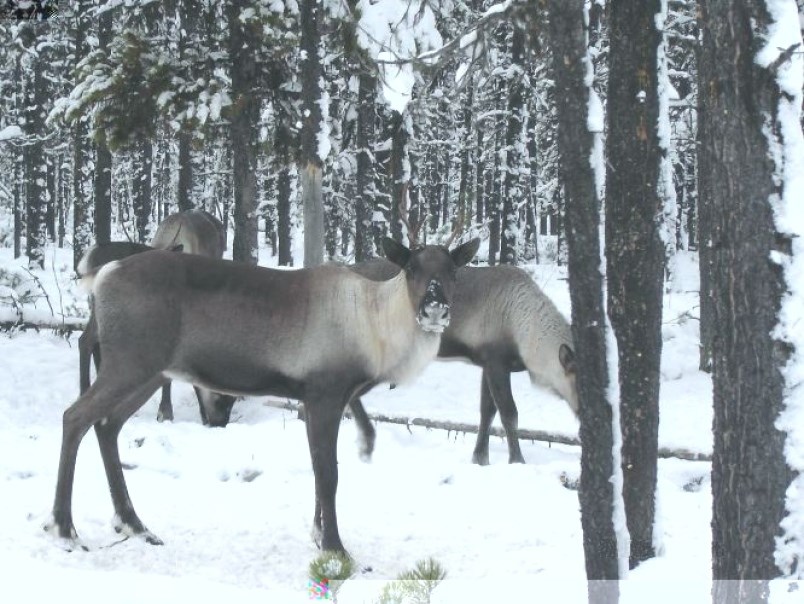Limited entry hunting of moose cows and calves is drawing fire from two Central B.C. MLAs.
In a statement issued shortly after this year's LEH synopsis was issued, Nechako-Lakes MLA John Rustad and Cariboo-Chilcotin MLA Donna Barnett, both members of the Opposition B.C. Liberals, said the hunt makes little sense given that the animals' population is struggling.
"I can't emphasize how irresponsible it is to open up the hunt on moose calves and their mothers," said Rustad. "The record wildfire seasons throughout the province in 2017 and 2018 have significantly reduced moose habitat, making them far more susceptible to predators such as wolves."
However, provincial government officials say the moose cow calf hunt is limited to about 12 per cent of the animals live in B.C., namely where their territories now overlap with those of endangered caribou herds as part of a complex strategy designed to provide the buffer they have had against predators.
Wildlife biologists contend that areas that have been logged generate the type of habitat that attract moose. Predators, notably wolves, follow and in the process encroach on the safe havens caribou use to avoid their attackers.
Because they don't reproduce at the same rate as other ungulates, like moose and deer, the caribou suffer a drop in their numbers without a corresponding decrease in the number of predators because caribou are incidental to their main types of prey.
While culling wolves would seem to be the obvious solution, it's expensive and has drawn flack from environmental groups. Instead, scientists have suggested a complementary strategy of keeping moose populations under control through hunting of their cows and calves in areas where there are caribou.
Contrary to what Rustad and Barnett indicated in their statement, the moose cow-calf hunt has been part of limited entry hunting since 2004, primarily in the Revelstoke and Parsnip regions.
For as long as it has been in place, it has been a sore spot for the Guide Outfitters Association of British Columbia whose members rely, in part, on the bull moose hunt for their business.
In the same statement from Rustad and Barnett, GOABC executive director Scott Ellis said antlerless tags are only issued when a population needs to be reduced.
"Since this is not the case, we would hope the increase in 'cow or calf' limited entry hunting authorizations is an oversight that can be corrected before the fall hunting season," Ellis said.
GOABC maintains the strategy of "alternate prey management" is based on faulty science and that the emphasis should be on controlling the wolf population.
"The issuance of additional hunting permits will not result in an instantaneous decrease in wolf populations," GOABC says in a May 2018 statement on the matter. "If alternate prey management was successful in reducing moose populations, there would still be a lag time between the decline of moose and the decline of the wolf population. During this period, a high population of wolves would result in an increase in the rate of incidental mortality of caribou."
The strategy has drawn mixed results when put into practice. According to a government circular, caribou numbers for the largest herd in the Revelstoke area stabilized, although two very small herds continued to decline, when the moose population was reduced by 80 per cent.
The government also conceded the strategy did not appear to help caribou in the Parsnip. But Psyllaki said the lead scientist on the project concluded the most likely difference was the intensity of the hunts and noted the moose population was reduced by 40 per cent in the Parsnip - about half the rate in the Revelstoke region.
Psyllakis also noted that wolf and moose management combined in these same two areas started in 2017. According to the circular, significant increases in the populations of the Quintette, Kennedy and Klinse-Za populations have followed.
The limited entry hunts appear to have resulted in less-than-signficant impact on cows and calves. In 2019, just 73 in the Revelstoke and Parsnip regions were harvested, despite 275 tags made available.
As for wolves, 474 were "removed" or culled in B.C. during the 2019-20 winter.
Psyllakis said steps are also being taken to preserve and recover caribou habitat, which scientists say is the long-term solution to restoring caribou herds.
(That has included establishing no-go zones for snowmobilers as wolves are known to use their tracks to reach the herds otherwise protected by deep snow during the winter.)
"We're not all the way there yet and it does take time to restore habitat," Psyllakis said.
As for Rustad's concern about the impact of the wildfire on moose populations, Psyllakis said said the there are no cow-calf hunts overlapping any of the wildfire area. What's more, over the longer term, she said wildfires help open up habitat for moose.



